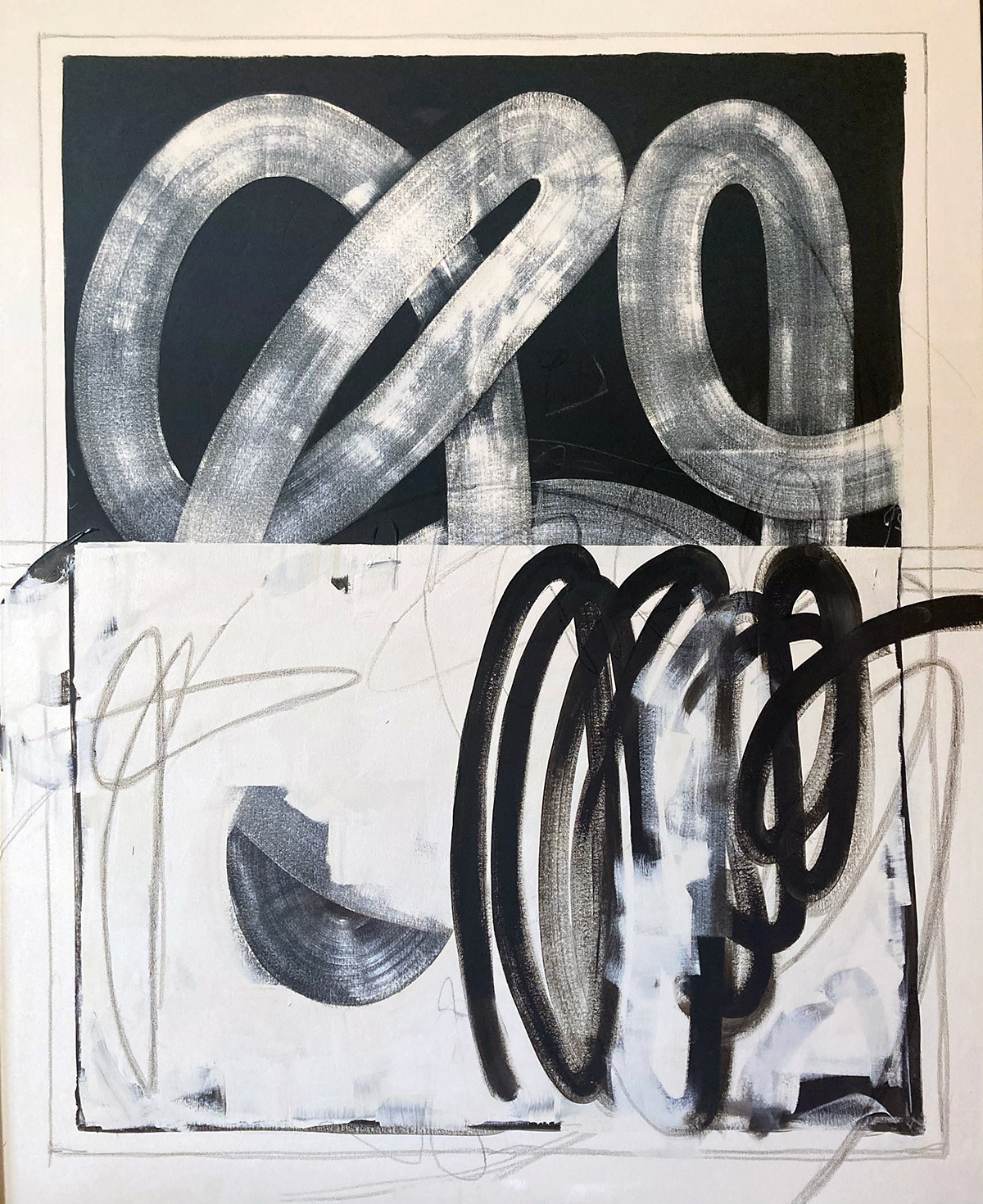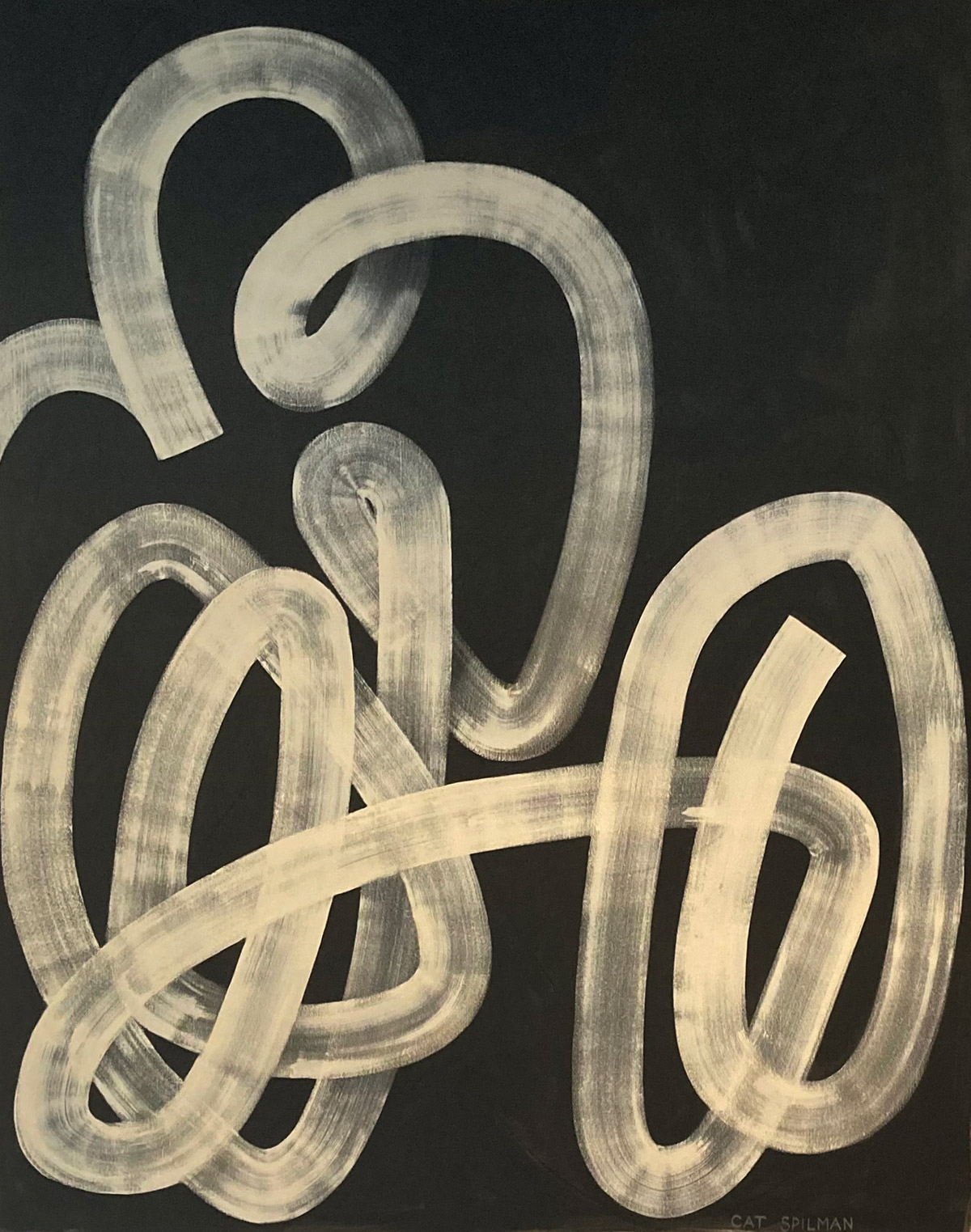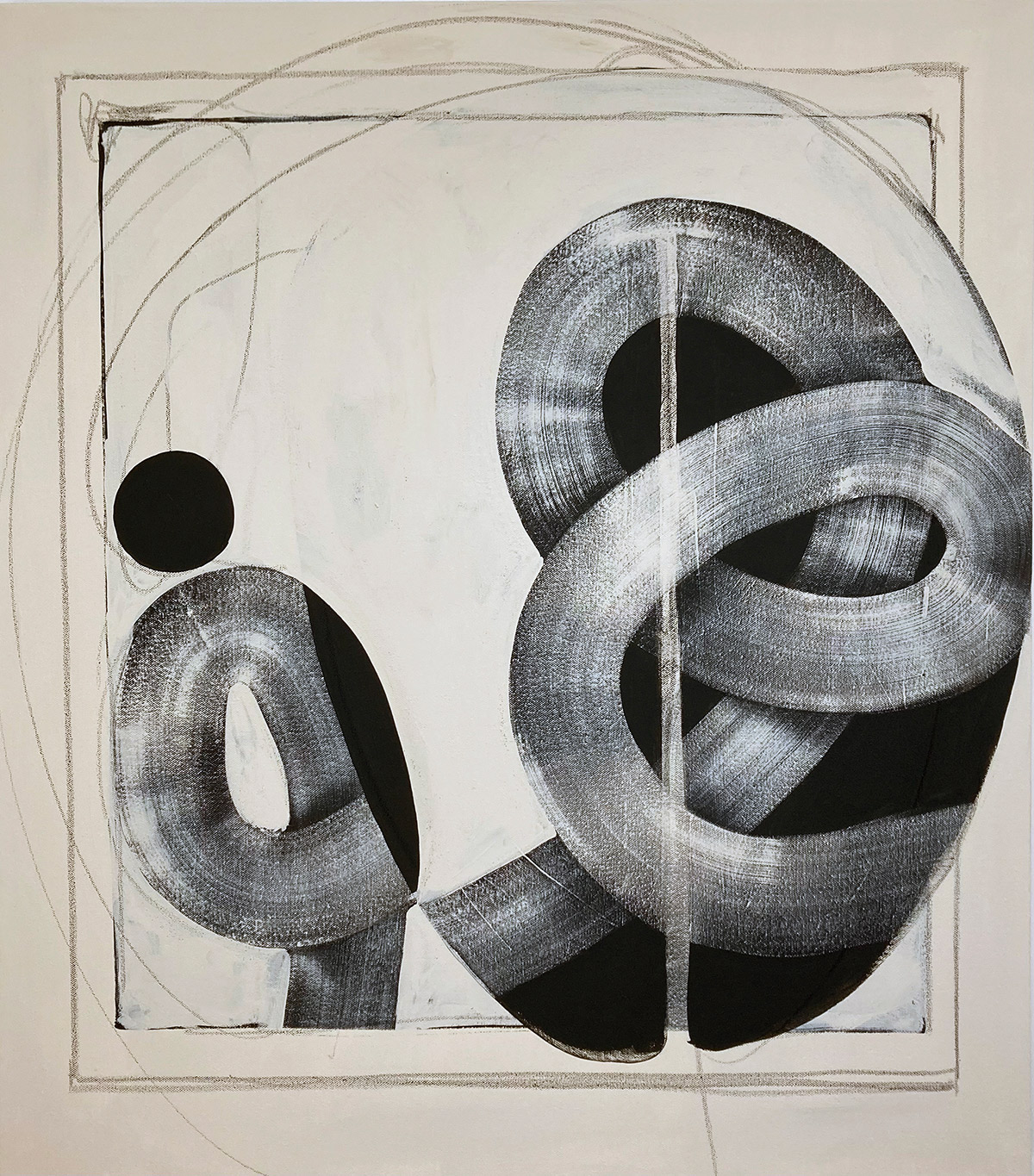Cat Spilman
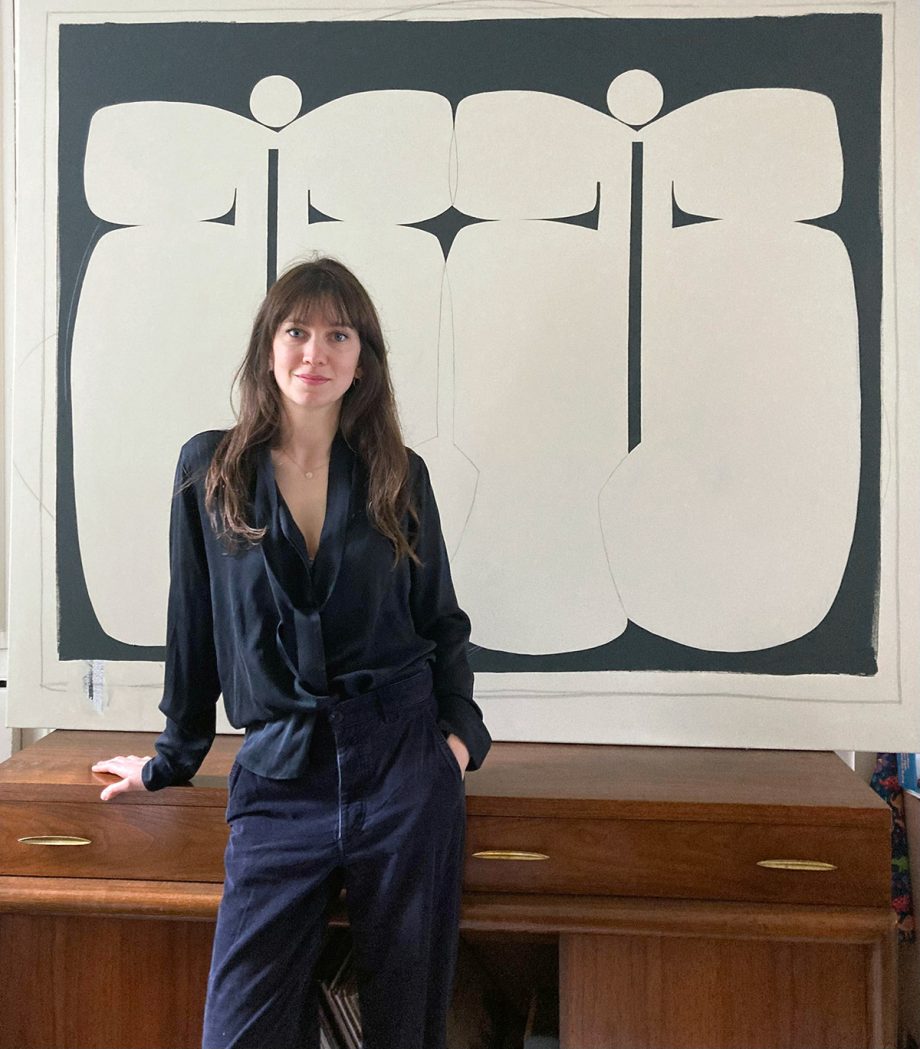
I see all my paintings as portraits. They’re monochrome, abstract pieces and most of them aren’t obviously figurative, but from my perspective they’re all portraits. WORDS BY CAT SPILMAN WWW.CATSPILMAN.COM @CATANNEDUNLEA
I started painting in this style after my husband died. I didn’t intend for it to be a career, I just needed space and time to do something creative so I could begin to heal. Painting felt like building a new language for myself – what was too sad or scary to say out loud could be said through painting. Now, a few years later, the things I’m saying aren’t just sad or scary. All parts of my life and my mind and my heart find their way into my work.
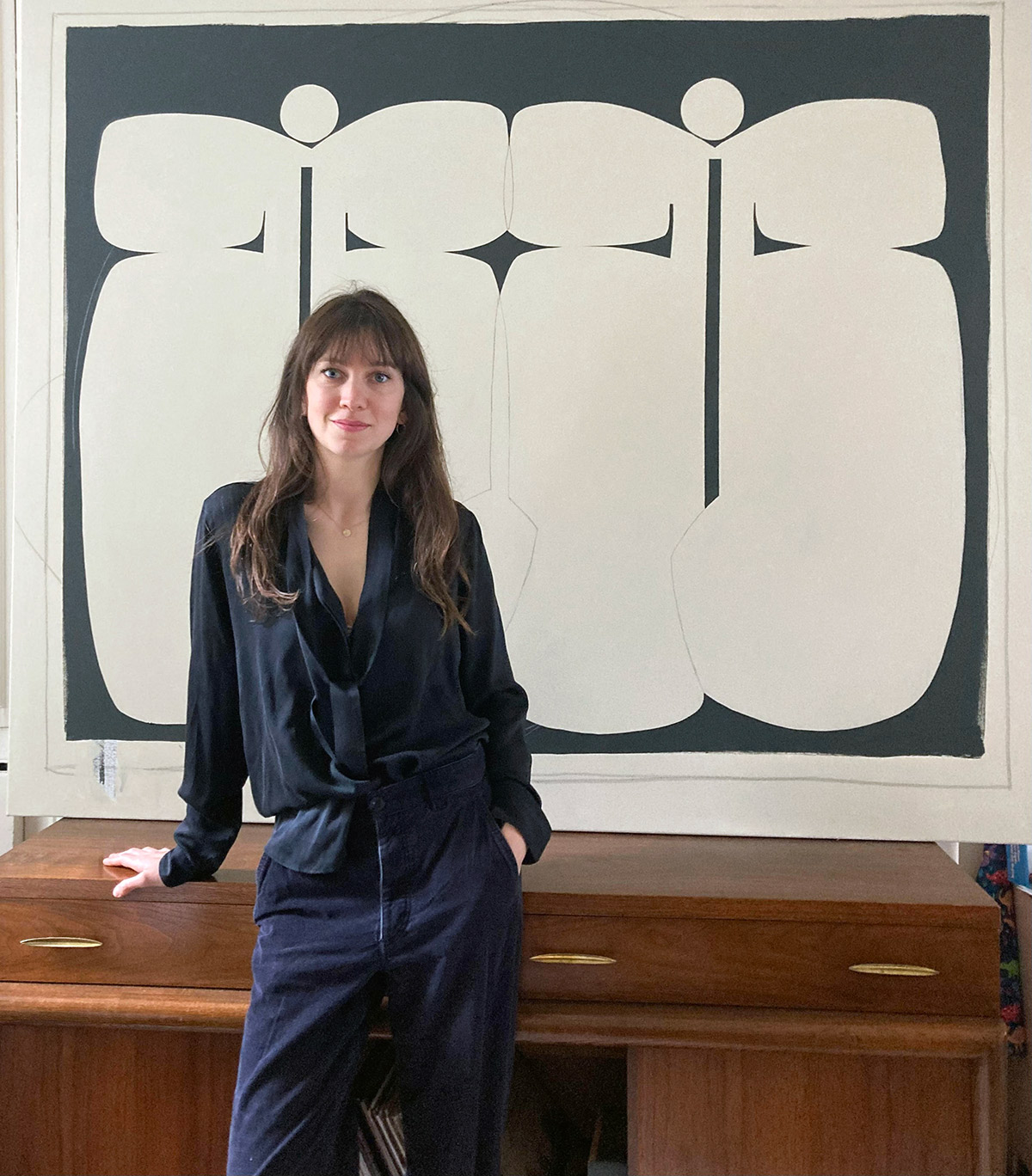
I go into the studio every day without agenda and I allow myself and my process to be informed by how I’m feeling or by certain things about the canvas. Maybe when I primed it I missed a spot, or maybe the border I drew around the outside is crooked – those things give the piece the very beginnings of its identity and then I work and rework and push and pull until I recognize how I’m feeling in the shapes on the canvas. It’s satisfying when I step back and acknowledge a piece is finished, but the process is much more interesting.
I often have to remind myself that there aren’t any rules, there aren’t mistakes, it’s all just part of the process. In terms of style, I decided early on to use only two colors and I think my palette is what has created a kind of unity to my work. I only paint what I like, it’s very personal, and I think in that way I’ve managed to stay true to myself and be consistent.
l always start by priming my pieces in black with the cream border, then I sketch directly onto the canvas in crayon. I draw layers and layers and often they get too dense and indistinguishable so I paint over most of them and then start sketching again. Eventually there’s a shape or conversation between the lines that I like and then I’ll start painting that in, but there are always layers. Sometimes just the sensation of movement from my arm as I make marks is is an idea that I’ll chase into something visual.
For me painting is like exercise or meditation. It connects me to myself and gives me a sense of calm and clarity. It’s also a way of communicating when words fail, or when things feel too delicate and personal to say more literally, so my motivation comes from a need to connect both to myself and to others.
